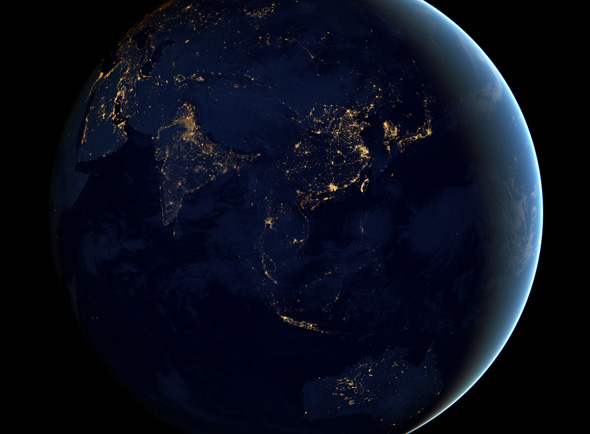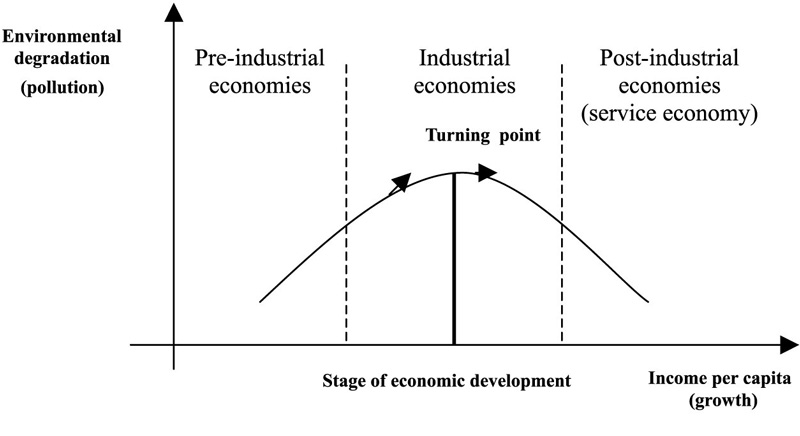-
Building Sustainable Cities in a Warmer, More Crowded World
January 3, 2013 By Laurie Mazur
The future is urban – but is it sustainable?
For decades – centuries, really – warnings have been issued: The burgeoning human population will outgrow the planet’s capacity to sustain us. The formula seems simple. More people equals fewer resources and greater environmental damage.
But today, we have a more nuanced understanding of the population-environment connection. We know that the relationship between human beings and the environment is complex, mediated by systems of production and consumption. And we know that population growth is not the only demographic change that matters: age structure and population distribution also shape environmental impact.
In other words, the planet’s “carrying capacity” is not just about human numbers, but about how people live, and where.
Urbanization Rising
Where we live is – increasingly – in cities. In 1950, cities were home to 750 million people. In 2008, for the first time in history, more people lived in urban than in rural areas. This trend is expected to continue. According to the National Intelligence Council’s Global Trends 2030 report, over the next two decades the number of city-dwellers will soar to nearly five billion, 60 percent of the world’s population. Most of those new urbanites will live in developing regions of Asia and Africa, and as many as two billion will live in “informal settlements,” or slums.
This means that building sustainable, prosperous cities is an urgent priority for the 21st century. It is difficult to comprehend the magnitude of the task. As Global Trends 2030 reports, “the volume of urban construction for housing, office space, and transport services over the next 40 years could roughly equal the entire volume of such construction to date in world history.”
Or, as Alex Steffen puts it in Carbon Zero: Imagining Cities That Can Save the Planet:
Every day, at least 200,000 people move to cities or are born in them. That’s like building a city the size of San Francisco every four days. Then doing it again, four days later. Then doing it again – and repeating the process several thousand times in the next 40 years.
The structure of those cities – their systems of transportation; energy and water use; and waste disposal – have profound consequences for our planet and its inhabitants, and for the ultimate sustainability of the human enterprise. What, then, does the urban future hold?
Defying the Kuznets Curve
There are reasons for hope. As cities stretch to accommodate growing populations, and as existing infrastructure reaches the end of its useful life, there is an extraordinary window of opportunity to build sustainable urban areas.
 Fully half of the built environment that will be in place by 2030 does not yet exist. And urban density and economies of scale can – in theory, at least – encourage more efficient use of resources. For example, public transit is practical and economical in densely populated cities. That is one reason why New York City, with its well-used transit system, has the lowest per-capita carbon emissions of any large American city: 6.5 tons per person annually, compared to 16.5 tons in car-dependent Houston.
Fully half of the built environment that will be in place by 2030 does not yet exist. And urban density and economies of scale can – in theory, at least – encourage more efficient use of resources. For example, public transit is practical and economical in densely populated cities. That is one reason why New York City, with its well-used transit system, has the lowest per-capita carbon emissions of any large American city: 6.5 tons per person annually, compared to 16.5 tons in car-dependent Houston.But cities are also engines of economic development, and their relative affluence typically leads to greater resource use. The National Intelligence Council observes that, historically, urban growth has been responsible for significant environmental damage, including dramatic reductions in forest cover; extinctions of plant and animal species; and changes in the availability and quality of fresh water.
Of course, some believe that economic development will ultimately improve environmental quality. This is the “environmental Kuznets curve” (EKC) hypothesis, inspired by the work of economist Simon Kuznets. The EKC proposes an inverted U-shaped curve for development – environmental conditions worsen in the early “smokestack” stages but later improve as affluent urbanites demand better conditions. This theory has real-world implications. In many countries, it is seen as a justification to “grow first and clean up later.”
Except that the “cleaning up” part may never come. In his book The Citizens at Risk: From Urban Sanitation to Sustainable Cities, development economist Gordon McGranahan shows that real cities rarely follow the orderly arc of the EKC. It is true that affluent city dwellers demand better conditions, but this effect is mainly for local environmental problems – such as contaminated water from poor sanitation. The same effect does not necessarily hold true for global environmental problems, including climate change, as more affluent city-dwellers consume more and expand their environmental “footprint.”
Re-Imagining Vulnerability
There are potential environmental benefits from urbanization, but much like the effects of the demographic dividend, they do not accrue automatically. Cities concentrate human activity, so if systems of production and consumption are problematic, they will be even more so in urban areas.
On the other hand, cities can also concentrate solutions. The urban building boom of the early 21st century offers an opportunity – and an imperative – to reimagine the cities we inhabit. In Carbon Zero, Steffen lays out such a vision. He calls for walkable, carbon-neutral cities that protect the ecosystems on which they depend.
While we are reimagining our cities, we may also need to rethink their location. Humanity’s great migration to the city has also been a migration to the coast. By 2025, about a third of the world’s people will live within 60 miles of a coastline. But, as scientists have long predicted (and as many in New York and New Jersey recently learned the hard way) those coastal areas are extraordinarily vulnerable to rising seas and intensified storms in a changing climate. The projected cost of business-as-usual – both in lives and treasure – is staggering.
In economic terms, rising seas could swallow nearly a tenth of the world’s wealth, according to the OECD. Worse, that projection does not account for the now likely melting of the Greenland and Antarctic ice sheets, which could raise sea levels by three to six feet this century. For the poorest people living in low-lying slums, that would be nothing short of catastrophic.
The task of reimagining – and possibly relocating – today’s great cities, and those of tomorrow, may seem impossibly daunting. But opportunities abound, and the stakes are high. We live in an increasingly urban world. If our cities are not sustainable, nothing will be.
Laurie Mazur is a consultant on population and the environment for the Wilson Center’s Environmental Change and Security Program and a writer and consultant to non-profit organizations. She is the editor, most recently, of A Pivotal Moment: Population, Justice and the Environmental Challenge (Island Press, 2009).
Sources: CNN, Dinda (2004), LiveScience, McGranahan et al. (2001), National Intelligence Council, Natural Resources Defense Council, Steffen (2012), The City of New York, UNDP, UNFPA, UN-HABITAT, Yale Environment 360.
Photo Credit: “Black Marble – Asia and Australia,” courtesy of NASA; Chart courtesy of Cialani et al. (2003).
Topics: Africa, Asia, biodiversity, climate change, conservation, consumption, demography, development, economics, environment, featured, flooding, forests, oceans, population, U.S., urbanization, water
 A Publication of the Stimson Center.
A Publication of the Stimson Center.




